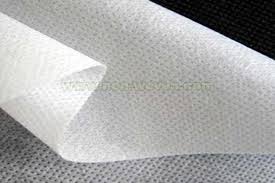Non-woven Fabric, also known as a non-woven material, is made by bonding fibers together using heat, chemicals, or pressure. Unlike traditional fabrics, non-woven fabrics are not produced by weaving or knitting. Instead, they are created mechanically, chemically, or thermally bonding fibers.
What makes the non-woven Fabric so versatile is its unique properties. It is lightweight, durable, and inexpensive, making it ideal for various applications. Non-woven Fabric manufactures disposable products like face masks, surgical gowns, and cleaning wipes. It also produces durable goods, such as automotive interiors, carpets, and home furnishings.
The process of creating non-woven Fabric begins with the selection of raw materials, such as polyester, polypropylene, or nylon fibers. These fibers are then processed into a web-like structure using mechanical or chemical methods. The web is then bonded using heat, chemicals, or pressure to create a solid, stable fabric.
One of the key advantages of non-woven Fabric is its ability to be customized to meet specific requirements. The type of fibers used and the bonding method can be adjusted to create fabrics with varying levels of strength, flexibility, and durability. This makes non-woven Fabric an attractive option for various applications, from medical textiles to geotextiles.
Another advantage of non-woven Fabric is its eco-friendliness. Because it is produced without weaving or knitting, non-woven Fabric creates less waste than traditional fabrics. It is also recyclable, which reduces the amount of waste that ends up in landfills.
In conclusion, non-woven Fabric is a versatile material with many applications. Its unique properties make it an attractive option for various industries, from healthcare to automotive manufacturing. With its lightweight, durable, and customizable properties, it is no wonder that non-woven Fabric is becoming an increasingly popular choice for manufacturers worldwide.
Non-Woven Fabric Understanding Quality and Its Importance in Various Industries
Non-woven Fabric is a versatile material that offers a range of benefits, such as durability, affordability, and customizability. However, when selecting non-woven Fabric for a specific application, quality is a crucial factor to consider. This article will explore the different aspects of non-woven fabric quality and its importance in various industries.
Fibers Type and Quality
One of the primary factors determining the quality of non-woven Fabric is the type and quality of fibers used. Polyester, polypropylene, and nylon are the most common fibers used in non-woven fabric production. The quality of these fibers can vary based on factors such as their length, strength, and chemical composition. High-quality fibers are essential for creating non-woven fabrics with desirable strength, durability, and breathability.
Bonding Method
The bonding method used to create non-woven Fabric is another critical factor that affects its quality. The three most common bonding methods are mechanical, chemical, and thermal. Each method has its advantages and disadvantages, and the choice of method depends on the intended application of the Fabric. For example, thermal bonding is ideal for creating fabrics with high strength and durability, while chemical bonding is best suited for creating soft and lightweight fabrics.
Uniformity and Consistency
Non-woven fabric quality also depends on the uniformity and consistency of the Fabric. Uniformity refers to the consistency of the fiber distribution across the Fabric, while consistency refers to the evenness of the bonding throughout the Fabric. High-quality non-woven Fabric should have uniform fiber distribution and consistent bonding, which ensures that the Fabric performs as intended and meets the desired specifications.
Importance of Quality in Various Industries
Non-woven Fabric is widely used in various industries, such as healthcare, automotive, agriculture, and construction. In these industries, the quality of non-woven Fabric is critical, as it directly impacts the performance and durability of the final product. For example, non-woven fabrics are used in medical gowns, face masks, and wound dressings in the healthcare industry. High-quality non-woven Fabric is essential to ensure that these products provide adequate protection and comfort to healthcare professionals and patients.
Similarly, non-woven fabrics are used in car interiors, seat covers, and air filters in the automotive industry. High-quality non-woven Fabric is necessary to ensure that these products meet the industry’s strict safety and performance requirements.


Leave a Reply